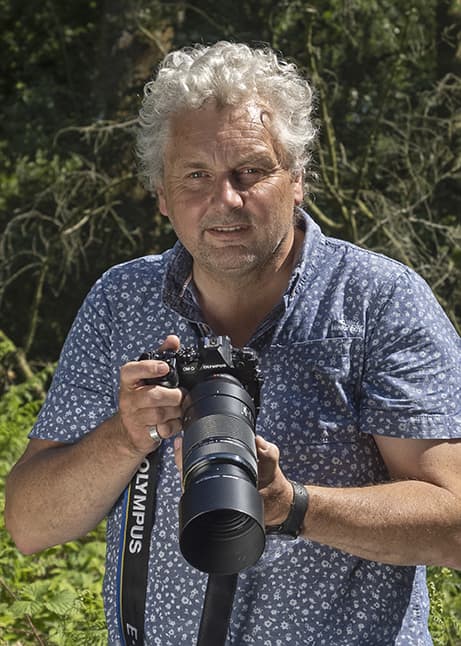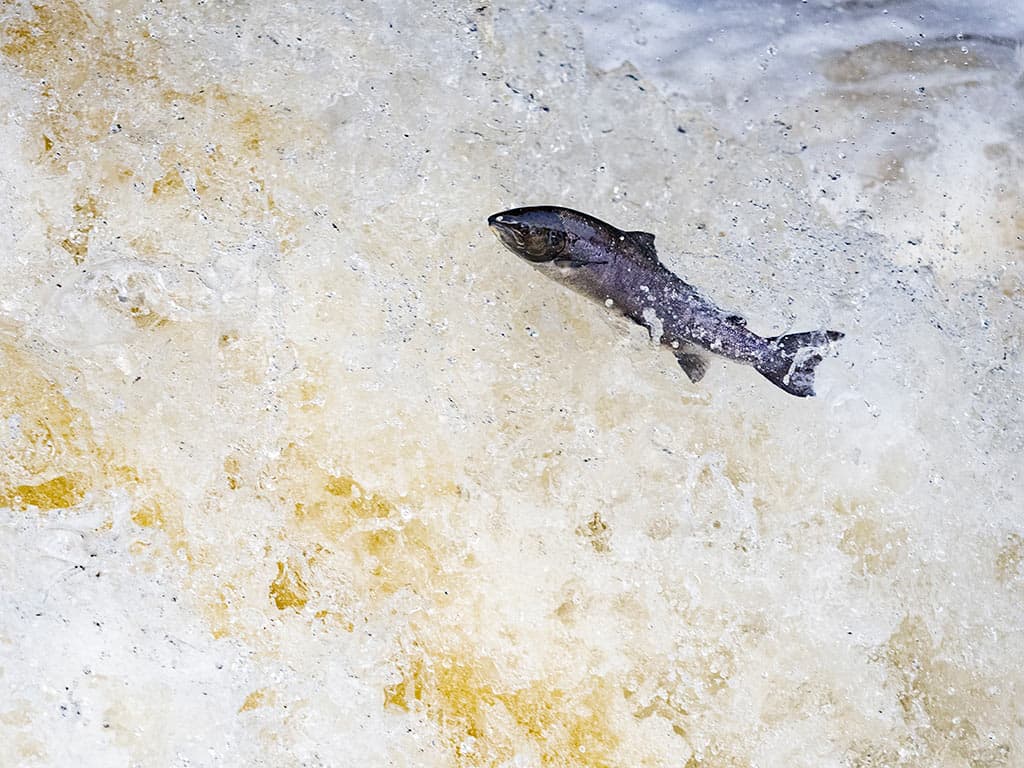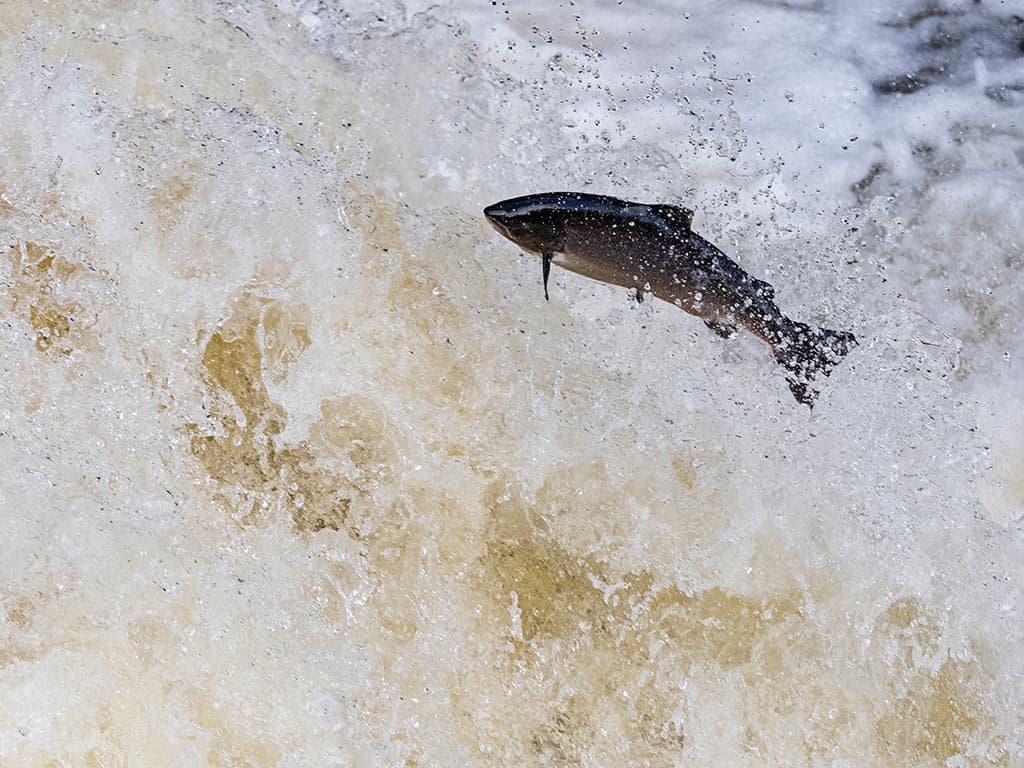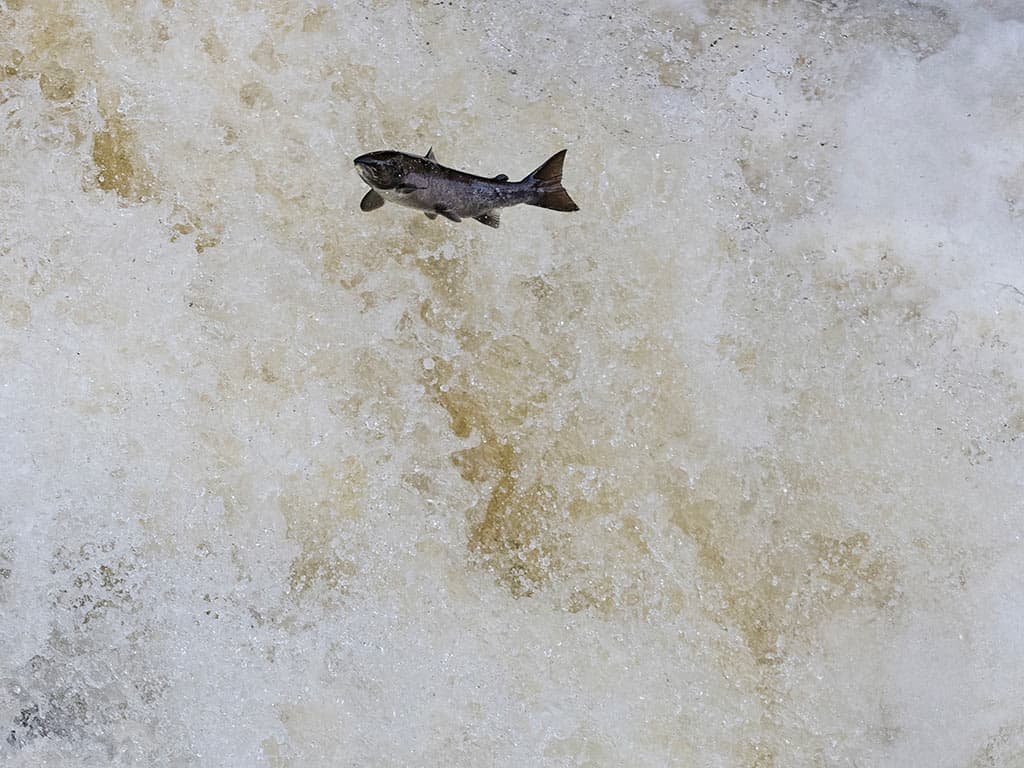To watch a salmon leap is to witness one of Britain’s great wildlife spectacles. David Tipling explains how to capture the action

David Tipling is your guide for capturing leaping salmon
David Tipling is one of the world’s most widely published wildlife photographers, and is renowned for his artistic images of birds. He is the author or commissioned photographer for many books including the RSPB Guide to Digital Wildlife Photography (Bloomsbury). Visit www.davidtipling.com and www.norfolkphotosafaris.com.
A roar followed by clapping drifted across the car park as I stepped out of my car. I had arrived at the Falls of Shin in northern Scotland. As I walked towards the falls, oohs and cheers drifted up from the viewing platform. The salmon were running, attempting to leap up the waterfall, and the spectacle – one of nature’s finest – was being enjoyed by a large crowd of people.
Many of us will be very familiar with nature documentaries that show salmon leaping into the jaws of grizzly bears. Britain may lack bears, but we do have some outstanding locations to photograph leaping fish. When Atlantic salmon return to the river of their birth to breed, they head back to those same headwaters where their lives began.
This journey requires extraordinary fitness, as they swim upstream negotiating cascades and waterfalls. Capturing a photograph of a salmon in mid leap is challenging but worthy of a cheer when you succeed.

The Falls of Shin in Scotland is a great location for capturing this spectacle from mid-July to October
Where and when to go
Salmon runs occur at different times of the year depending on the river. The season starts in early summer and runs to mid-November. Check the internet, social media and, if you are local to a good salmon river, talk to the locals about when to go. There are several hotspots that offer a good chance of success.
Two of the best are Stainforth Force in the Yorkshire Dales, which peaks from mid-October to mid-November, and the Falls of Shin in northern Scotland where there is an excellent viewing platform giving you a great angle as they leap. Any time from mid-July to October can be productive here, but it does get busy.

Atlantic salmon migrating up the River Shin in early autumn. Olympus E-M1 Mark III, 40-150mm, 1/2000sec at f/2.8, ISO 640
Watching the weather for rainfall to gauge how fast a river will be flowing is vital for success, as conditions need to be right for the fish to move. If the water flow on a river is low, it is unlikely to produce any opportunity.
Optimum conditions are straight after heavy rains following a dry period. The stronger river flow encourages the salmon to move. There is no hard and fast rule on the best times of day to see fish leaping, but the middle of the day tends to be quiet. Perseverance is key to success.
Gear
Once you have identified where to visit you then need to work out how close you might get and think about the type of shots you wish to capture. This is perhaps a good time for me to urge caution when photographing on slippery rocks around waterfalls because it is always tempting to get as close as you can.
My lens of choice for photographing leaping salmon is the Olympus 40-150mm f/2.8 Pro, so in 35mm terms a zoom with a range from 80mm to 300mm is a good option. This gives you plenty of scope at both capturing fish within the environment and for getting more tightly framed portraits. There may be opportunities to go for pictures with a wideangle lens, perhaps showing more of the river fringed with autumn colour.
Technique
The not knowing where and when a salmon will leap is the biggest challenge. After watching for a while, you should notice some points at the base of your waterfall where most fish are appearing so focusing in that rough area gives you a head start.
A leap can start and finish in just a second or two, so as soon as you see a hint of fish you need to be firing off a burst of shots. Because the action is fast and furious, I recommend a shutter speed of at least 1/2000sec; you might be able to get away with less but to be sure I would use this as a minimum.
Coupled with this is the need to have a reasonably large depth of field as you are in effect shooting pictures without knowing at which angle or how high the salmon will leap.
In 35mm terms I tend to try to shoot at around f/8 or f/11 if the light allows. It is pointless to use autofocus; everything happens far too quickly, and you have tumbling water to contend with. So, I manually focus just a bit closer than where I think the fish will leap from the water and use as big a depth of field as possible.
Once focused I would recommend not looking through your viewfinder, but instead set up on a tripod, tighten everything down then fire the shutter while watching either with a remote or with your finger on the camera button. Your reactions are likely to be quicker than if you are looking through your viewfinder.
Leaping salmon in black & white
My journey as a wildlife photographer started in the late 1970s shooting in black & white. I have retained a passion for the medium. The emphasis on tone and texture that comes from splashing water is well suited to the mono treatment. Not every image however deserves conversion, so I look for pictures that might have good contrast with interesting patches of light and shade.
My chosen software for this conversion is Silver Efex Pro 2 in the Nik Collection by DxO. I like Silver Efex for the ability to scan lots of preset pictures to see which treatment might work best before making my adjustments. Depending on the image, I may use the dodge and burn tool to lighten or darken areas if I feel the image will be enhanced.
Olympus Pro Capture mode
I am a big fan of using the Olympus Pro Capture feature to photograph leaping salmon. It helps eliminate dependence on your reaction time, and acts like a time machine saving images to a revolving buffer when you half-depress the shutter button. When the action happens, and you fully depress to take your shot, it can save up to 35 frames in the buffer at that point and can fire at 60 frames per second.
That is a lot of pictures but means you capture the action around half a second before you pressed the shutter button, so capturing that fleeting action that would be impossible to get unless you randomly fire bursts in the hope of a lucky capture. There are two Pro Capture settings – low and high. Low allows continuous autofocus, high does not. I use the high setting and pre-focus, setting my pre-shutter frame count to 35 so the camera keeps 35 frames from the buffer.
Further reading
Photo Insight with David Tipling: Bird box











